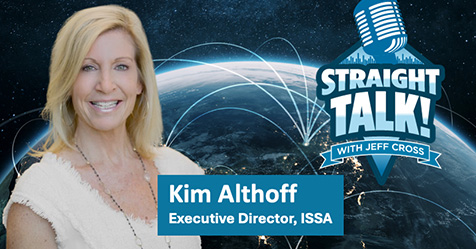Through the years, I have been invited into quality control program planning sessions, design sessions, review sessions, and even emergency sessions with cleaning organizations frustrated by their ineffective quality control programs. I have observed many times that even veteran quality teams have fallen into the trap of focusing their efforts on only tweaking the elements of the inspection process—the data collection device, the metrics, the sample sizes, etc.
While the inspection process is an important aspect of a quality control program, successful organizations learn that the outcomes associated with their quality control program are also dependent on how effectively they have integrated it with other aspects of their organization. Unless quality control efforts are understood and integrated across all stakeholder groups, the outcome will more often than not lead to frustration at all levels.
Symptoms of a Poorly Integrated Quality Control Program
How can a cleaning professional know if his/her company’s quality control program is effective and well-integrated? Here’s a quick way to find out: Keeping your quality control program in mind, answer “yes” or “no” to the questions below.
- Are the cleaners, supervisors, and customers all aware of the cleaning specifications (such as required tasks, frequencies, and performance expectations)?
- Do all stakeholders feel that your quality control scores are accurate and meaningful?
- Do all agree that the inspectors are looking at an appropriate cross-section of the facilities, and at the correct frequencies?
- Do management and supervision have an understanding of the cleaning deficiencies and their causes?
- Are quality inspections or survey results communicated to your cleaners and customers?
- Do you have a well-developed, written quality control plan?
- Do management, supervision, customers, and cleaners all generally agree on the quality scores?
- Do your supervisors perform and track corrective action for quality deficiencies?
- Do you adjust your training program to reflect the inspection results?
- Are your quality scores trending upwards over time?
- Are customer complaints decreasing over time?
If your answer is “no” to more than a few of these questions, then your organization’s quality control program is likely in need of a second look. However, do not be disheartened. Your quality control program can become highly effective by focusing on the quality control plan itself and strategic integration.
Designing a Successful Quality Control Plan
A truly effective quality control program must be built on a solid foundation and include certain basic elements—the building blocks for establishing a successful program. Below is a list of the basic elements to include in your written quality control plan.
Well-defined cleaning specifications: A clear specification allows the cleaners to understand what tasks they must perform. It provides the customers with a clear expectation for service delivery, and gives the supervisors and inspectors a standard by which they must inspect.
Inspection tool/methodology: Research and select the correct quality tool and inspection process for your organization, such as a hard copy form, spreadsheet, smartphone app, or customer survey. Ensure that your plan includes effective scoring methodology, key terms and definitions, and what area types to inspect.
Schedule: Include a schedule or calendar that displays the inspection plan for each week or month of the year. Facilities should be inspected at least once per month. The schedule should also indicate the time of day for inspections, and identify the assigned inspector.
Performance goals: Include the quality metrics and scores by which you will judge your success. In addition to the targeted quality scores, this section of the plan should include performance goals related to customer complaints, the amount of time allotted for corrective action, the number of safety incidents, and other meaningful benchmarks.
Corrective action: It is not enough to merely identify deficiencies; there must be a clearly defined corrective action process, identifying what action needs to be taken, who is responsible, the projected completion date, and the actual completion date.
Reporting: Define which reports the organization will use and how they will share these with the stakeholders. Web-based reports are ideal, but reports can also be shared via email, texting, and hard copy.
Communication and customer focus: Communication (especially with the customer) is the glue that holds the quality control process together. Unfortunately, many organizations fail to properly communicate the quality control program with their cleaners and customers. The quality control plan must address communication at all levels, with a special focus on formal interactions with the customer.
Training and continuous improvement: The best way to enjoy ongoing cleanliness improvements is to link the quality control process with a training program. The plan should explain how the inspection results will be used to adjust and modify the organization’s training curriculum.
Length: The quality control plan need not be excessively lengthy or detailed. As long as it captures the key elements above, the plan will include the fundamentals to position the organization for success.
Strategic Integration
Integrating a quality control plan with other organizational activities, and involving others in its design and management, can help ensure the program’s success.
Integration with other departments: It is important to assess what can be done to better align your goals with the goals of other groups or departments within the organization. Aligning with others’ initiatives will help with the design and management of a program that compliments their efforts.
For example, does the quality control program align with the budgeting goals? This may affect the number of inspectors available. Does it align with human resource goals? This may affect the corrective actions available when quality outcomes are not meeting expectations. Does it align with training goals? This may affect the organization’s investment in training programs or industry seminars.
Involving others in the program design and management: The best quality control platforms have been designed with input from all those affected by the program. Include representatives from diverse groups, including customers, and those who serve on development committees, steering committees, project teams, or task forces. Review and seek input from each group on the cleaning specifications, the quality expectations, the scoring system, the inspection process, the communication plan, and the reporting requirements. Conduct regular reviews of the written plan and its outcomes, and adjust it with input from a wide variety of people.
Alignment with the organization’s mission: The concept of continuous quality improvement should be addressed in an organization’s mission statement. The leaders of the cleaning program must wholeheartedly buy into the importance and relevance of the quality control program, using every opportunity to reinforce the message of quality improvement. For example, if sustainability and green cleaning are key aspects of your organization’s mission, the quality control plan can include regular inspections and compliance tracking of green chemicals and equipment.
The Best Time for Change is Now
An effective quality control program, built upon solid fundamentals and integrated across all stakeholder groups, will ultimately lead to better customer relationships, cleaner facilities, and meaningful metrics. These types of improvements are too important to delay. Start now by slowly outlining a quality control plan, a strategic integration plan, and then take action to see the plan through.




